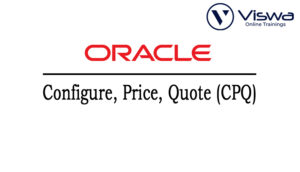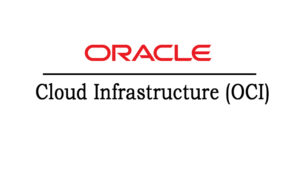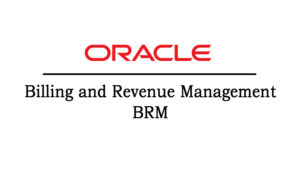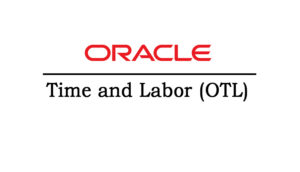Business Analyst Investment Banking Online Training
One of the top providers of online IT training worldwide is VISWA Online Trainings. To assist beginners and working professionals in achieving their career objectives and taking advantage of our best services, We provide a wide range of courses and online training.
Learners : 1080
Duration : 30 Days
About Course
Business Analyst Investment for us An example of financial service is investment banking. Investment banks provide advice to both individuals and businesses. It doesn’t accept deposits like retail or commercial banks do. They work in corporate finance instead, and when a customer issues securities, they may represent that client. The buy-side and sell-side of investment banking are separated, with the buy-side dealing in the trading of securities for money and the sell-side advising institutions on investments. Additionally, they might support FICC services, capital raising, and mergers & acquisitions.
Business Analyst Investment Banking Training Course Syllabus
✔ Business Analyst Investment Banking Training Syllabus contact +91 9493999586
| Live Instructor Based Training With Software |
| Lifetime access and 24×7 support |
| Certification Oriented content |
| Hands-On complete Real-time training |
| Get a certificate on course completion |
| Flexible Schedules |
| Live Recorded Videos Access |
| Study Material Provided |
Business Analyst Investment Banking Training - Upcoming Batches
Coming Soon
AM IST
Coming Soon
AM IST
Coming Soon
PM IST
Coming Soon
AM IST
Don't find suitable time ?
CHOOSE YOUR OWN COMFORTABLE LEARNING EXPERIENCE
Live Virtual Training
-
Schedule your sessions at your comfortable timings.
-
Instructor-led training, Real-time projects
-
Certification Guidance.
Self-Paced Learning
-
Complete set of live-online training sessions recorded videos.
-
Learn technology at your own pace.
-
Get access for lifetime.
Corporate Training
-
Learn As A Full Day Schedule With Discussions, Exercises,
-
Practical Use Cases
-
Design Your Own Syllabus Based
Business Analyst Investment Banking Training FAQ'S
- The Income Statement, Balance Sheet, and Cash Flow Statement are the three primary financial statements. The income statement reveals a company’s final net income as well as its sales and expenses over a period of time, which is important information regarding their importance.
- A company’s assets, including its plant, property, and equipment, cash, inventories, and other resources, are represented on the balance sheet. The liabilities are similarly disclosed,
- including the debt, accounts payable, and equity owned by shareholders. The assets would always equal the liabilities plus shareholders’ equity on the balance sheet.
- Last but not least, a cash flow statement shows the net change in cash. It provides the cash flow from the business’s investing, operating, and financing activities.
Business Analyst Investment
Business Analyst Investment
- It would be the cash flow statement. The reason is that it provides a true picture of how much cash the business is generating in actual terms.
- Hence, the cash flows are the main thing you pay attention to while you are analyzing the business’s overall financial health.
- Income Statement: Assuming a 40% tax rate, a decrease in depreciation costs would result in an operating income reduction of $100 and a net income decline of $60.
- Cash Flow Statement: The $100 Depreciation is a non-cash item that is brought back, therefore overall Cash Flow from Operations increases by $40. The top of the cash flow statement shows a $60 decrease in Net Income. The overall Net Change in Cash rises by $40 in the absence of any further adjustments.
- Balance Sheet: Due to depreciation, Plants, Property & Equipment on the asset side decreased by $100, but cash increased by $40 as a result of changes to the Cash Flow Statement.
- WACC is calculated as follows: Cost of Equity * Proportion of Equity + Cost of Debt * Proportion of Debt * Tax Rate. The Capital Asset Pricing Model (CAPM) is used to calculate the cost of equity.
- Cost of equity = Risk-free rate + beta* Equity risk premium is the formula.
- Cost of Debt = The yield on a 10- or 20-year U.S. Treasury bond at the risk-free rate.
- Based on how risky the comparable companies and stocks are, beta is estimated.
- The amount by which equities are anticipated to beat “riskless” assets is known as the risk premium.
- The percentage represents how much of the capital structure of the company is occupied by each component.
By learning Business Analyst Investment through VISWA Online Trainings, advance in your job.
Reviews
 Vishnu Gadipudi2023-08-20I Enrolled in VISWA Online Trainings for IBM Integration BUS course . Recently I Completed IBM Integration BUS Batch. It was Really Awesome Experience. Best Place To Learn , Experienced Trainer, Gives Us High Level Knowledge....
Vishnu Gadipudi2023-08-20I Enrolled in VISWA Online Trainings for IBM Integration BUS course . Recently I Completed IBM Integration BUS Batch. It was Really Awesome Experience. Best Place To Learn , Experienced Trainer, Gives Us High Level Knowledge.... Navya Biradavolu2023-08-20I was enrolled for looker Bl Tool,it was amazing experience . especially soft skill batch is one of my favourite batch . overall learning process is quite impressive.
Navya Biradavolu2023-08-20I was enrolled for looker Bl Tool,it was amazing experience . especially soft skill batch is one of my favourite batch . overall learning process is quite impressive. Indla sneha2023-08-20I have joined I have joined VISWA Online TRAININGS for Java full stack course and i have completed Advance Java module. I had a good knowledge of Hibernate, spring,spring boot,spring MVC. Tutor has knowledge in depth and is supportive. Srinadh sir solved all our doubts....
Indla sneha2023-08-20I have joined I have joined VISWA Online TRAININGS for Java full stack course and i have completed Advance Java module. I had a good knowledge of Hibernate, spring,spring boot,spring MVC. Tutor has knowledge in depth and is supportive. Srinadh sir solved all our doubts.... bindu hima2023-08-20I am recently completed Talend course and trainer is Rajendra very professional and helpful. All the doubts were solved in a precise manner.
bindu hima2023-08-20I am recently completed Talend course and trainer is Rajendra very professional and helpful. All the doubts were solved in a precise manner. Tarunasree Gowra2023-08-20"I truly enjoyed this course." Chaitanya sir fantastic-very knowledgeable. Sir give us very informative and clear instruction on how to achieve the goal. Thank you!
Tarunasree Gowra2023-08-20"I truly enjoyed this course." Chaitanya sir fantastic-very knowledgeable. Sir give us very informative and clear instruction on how to achieve the goal. Thank you! Tejaswini Kommu2023-08-20Overall Linux Admin sessions batch was very good. Mr. RAM Krishna teaching was very helpful to remind our basic concepts in linux & networking.
Tejaswini Kommu2023-08-20Overall Linux Admin sessions batch was very good. Mr. RAM Krishna teaching was very helpful to remind our basic concepts in linux & networking. Gopanaboina Mounika2023-08-20It was great learning with such a great and experienced staff. Praveen Sir (Oracle EPM Cloud - FCCS) was very helpful and operations team also very helpful in solving any minor problems students go through process.
Gopanaboina Mounika2023-08-20It was great learning with such a great and experienced staff. Praveen Sir (Oracle EPM Cloud - FCCS) was very helpful and operations team also very helpful in solving any minor problems students go through process. Jyothi Gutlapalli2023-08-20I like to share my experience which provide lots of courses and one of those I recently completed my Salesforce BA Course and I like to tell you it was a great experience and my knowledge and confidence is really boosted after completing this course.
Jyothi Gutlapalli2023-08-20I like to share my experience which provide lots of courses and one of those I recently completed my Salesforce BA Course and I like to tell you it was a great experience and my knowledge and confidence is really boosted after completing this course. Harshibandi2023-08-20Good experience and great learning platform for Hyperion Essbase and Planning. The faculty is also well trained and soft spoken.
Harshibandi2023-08-20Good experience and great learning platform for Hyperion Essbase and Planning. The faculty is also well trained and soft spoken. Chaitu Viswa2023-08-20It was very good session for QlikView. I would like to thank to teacher Mr.Chandu for providing guidance for the required modules. Thanks VISWA Team for giving apportunity to leran new skills.
Chaitu Viswa2023-08-20It was very good session for QlikView. I would like to thank to teacher Mr.Chandu for providing guidance for the required modules. Thanks VISWA Team for giving apportunity to leran new skills.




